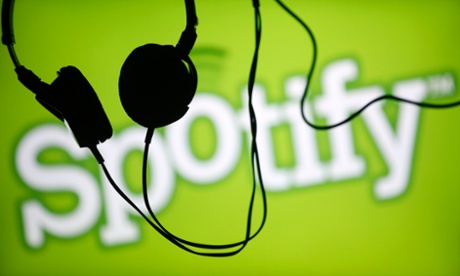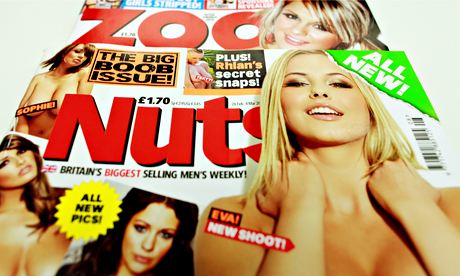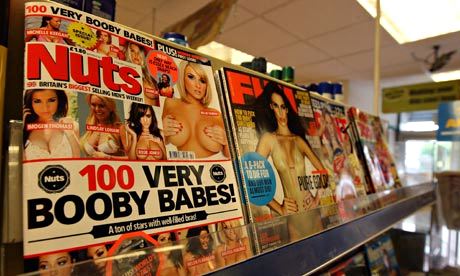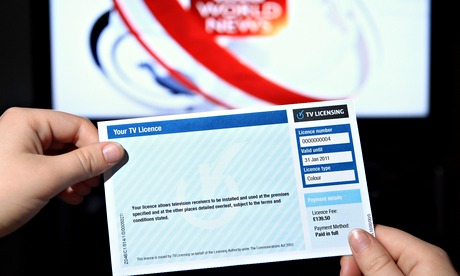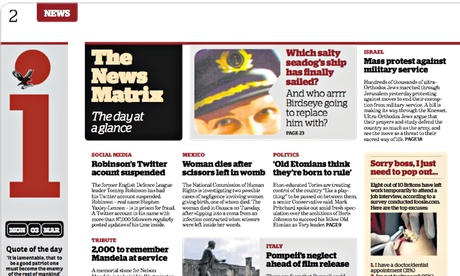Case study :
The impact of new and digital media on the magazine industry :
My case study will involve the 'Impact of new and digital media on the magazine industry' it will involve the negative and positive effects of new mass media introductions on magazine publishing industry. According to research, it is clear that from a historical point of view, since the earli 1900's the trends of new media both displacing magazines as well as spurring magazine sales and introductions of feature films, sounds recordings, radio, television, computers, and the world wide web. therefore, New media has a tendency to displace magazines.
I have chosen this topic because it is interesting to discover how magazine industry beat the new and digital media in order for their industry to survive. according to the theorist, Villano, 1990 he stated that, "Media organizations see the web as a medium they must conquer if they are going to survive." therefore, he is arguing that new and digial media does threaten existing meda industries to some degree. According to research, I had found out that, the magazine industry reacted to the loss of national advertising and eventful failure of mass circulationm general interest magazines due to the increasing use of television by both consumers and advertisers (Gage, 1982, van zuilen, 1977)
Magazines I will be focusing on is ...
1- Vanity Fair which decreased by 18.8%
2- The new yorker decreased by 17.4%
3- People 18.6
4- US weekly 11.4%
5- star magazine 14.2%
6- Vogue magazine down by 16.5%
7- Cosmopolitan down by 15.5% - This is because Vogue and Cosmopolitan are too expensive for people to buy by print so they use new and digital media instead.
Theories :
1- Has new and digital media had an impact upon ownership and control of the media institutions involved in your case study area? Explain in detail any impact and what exactly has changed ?
The Magazine I will focus on here is vogue magazine who is owned by Conde Nast. New and digital media has had an impact upon the ownership and control of magazines, especially Vogue, because New and digital media is becoming better than print media. New and digital media, example; smart phones have many advantages, as they are faster in getting information, there is the ability to update and interact, marketing via links, data feedbacks. However, most importantly, new and digital media reduces the incremental cost of production and distribution. Cosmopolitan is an international magazine for women. It was first published in 1886 in the United States as a family magazine, was later transformed into a literary magazine and eventually became a women's magazine in the late 1960s. Also known as Cosmo, its content as of 2011 included articles on women's issues, relationships, sex, health, careers, self-improvement, celebrities, fashion and beauty. Published by Hearst Magazines,Cosmopolitan has 64 international editions, is printed in 35 languages and is distributed in more than 110 countries.Joanna Coles - editor.
2. What impact has there been on the way in which the audience now consume the media products/texts involved in your case study ? How does it differ from what went before? Consider (SHEP)
The rapid developments in new media has had a huge impact on the way audiences consume these texts. Due to the effects of globalisation and citizen journalism,
audiences are now playing an active role in the process of collecting,
reporting and analysing information, becoming the producers as well as the
consumers of media. Traditionally, audiences would gain awareness of news and
gossip from newspaper and magazine publications through simply talking to
others face to face. Now however, the barriers of communication have been
broken down with information being fed to audiences via a wide range of new
media including 24 hour television and radio broadcasts, websites of news
institutions, social networking sites, phone applications and many other
techniques which make sharing and consuming the media a lot easier than it used
to be. Before the development of new media such as social networking and
blogs, audiences played a passive role in consuming media, absorbing what they
heard or read without being able to search for other perspectives of a story or
any that weren’t featured in a particular newspaper. Ways of consuming media
have now changed from this dramatically with the audience not only consuming
texts and products, but also producing them, something that these types of
e-media have had a huge impact on. For example, blogs which has given the oppourtunity for
people to interact and share their opinion.
One of the magazines I have been
researching about and so far have found a considerable amount of information on
is the “Cosmopolitan” magazine which has responded to social networking this way
within the publication on their “C-Mail” page – a direct take on “G-Mail” that
the audience can instantly recognise and therefore feel a part of – features a
column based on Facebook status’s titled “the ‘update’ awards” where readers
send in their status updates and the magazine prints their favourites
demonstrating a clear way that new media has had an impact on audience
consumption as they take on an active role in producing the content for the
magazine. In addition to this is “Cosmo Forum” on their website and within the
page, showing how the institution has embraced new media by setting up their
own website forum which acts as a mini social networking site for Cosmopolitan
readers, giving them a sense of belonging by using media that allows them to communicate
with those that share similar interests and opinions, with similar
personalities giving them the opportunity to create their own community.
3- What impact has there been on how the media institution now has to produce the texts and the way in which the texts/products are distributed and exhibited ? this should involve a detailed textual analysis of at least 3 texts to demonstrate the point.
Into : The devolpment of new media has had a huge impact on the way traditional media, in particular magazines, have to produce and distribute texts, with new media forcing institutions to conform to its evolution in order to keep their audiences interest. articles in magazines must acknowledge the progress of new media as this is what their audiences are now immersed in therefore to maintain their readership they must tailor the content of the publication to this. as well as manipulating the actual content of the magazines, institutions have responded to new media in terms of how they promote and exhibit their products, converging the traditional print platform with e-media, with magazine now having websites, social networking accounts of phone applications.
Vogue: According to research in Britain, Vogue magazine success is based upon advertising rather than its sales avenue. therefore, it is seen to be more commercial than other editions of Vogue. One way the media institution produces its text and the way Vogue distributes its product is by their website, the fact that they have a website gives the audience a advantage to not buy the magazine and gather the information they want to know from the internet. the fact that Vogue has now created a website for their magazine, emphasizes the fact tat they recognize that print media is dying and is more expensive therefore sales are decreasing, and in that case they have produced a website in order for people to be able to access their magazine without paying. although this can be seen as a negative as that means less audience will buy the actual magazine, and would just read it online, this could be seen as a success for the magazine itself as it means that many people will read the magazine and spread the word that the magazine is a success. More than that the website also references links to other webpages like, "makeup, fashion , blogs " and even other institutions like facebook and twitter which is effective.
Cosmopolitan: One main example of how the
magazine industry now has to produce its texts and the way in which the
products are distributed and exhibited is demonstrated in Cosmopolitan
magazine, who advertise their website within the content of the text. Headlined
“Click into Cosmo” the advertisement uses imperative lexis to encourage the
audience to make use of the use new media as they recognise that this is what
their consumers now favour due the sense of belonging and community these
websites offer them. The Cosmopolitan website also references links to the
institution’s Facebook and Twitter pages with a simple iconic image that users
instantaneously recognises to capture their attention and offer an alternative
route for them to keep up to date with the magazine and the magazine’s growing
loyal community. This is a clear example of the impact new media has had on how
institutions have had to change the way they produce and distribute texts by
integrating traditional print format with e-media to ensure the maintenance of
readership and interest and engaging in the new media developments of the time.
4. Is the size of the audience any different now than before the impact of new and digital media (or has the pattern of usage changed ? E.G consider for the impact of new and digital media on TV broadcasting the change in audience ratings for programmes as a consequence of the deregulation of TV. (Prior to deregulation audience figures could be 20m+ for Eastenders etc to a situation today where, due to the massive number of channels now available, audiences are vastly reduced and fragmented.
The size of the audience now is much larger than it has been previously and this is due to the fact that there are now more ways of people accessing it. In particular response to Twitter, the target audience of it being the mid youth market, there is more chance for them to get involved in the shows they watch and the things they read and allows them to respond to it in a way that wasn't available with traditional media. Institutions such as Twitter now allow people to share the things that they like, such as a particular news story they read or a show that they enjoyed, letting others also do those things as well. This will ultimately mean that more people will see that media text, particularly if it shared by someone famous or in Twitter’s case, with a large number of followers. A lot of the media we consume now is through the internet, whether we are watching TV on an On Demand service such as BBC iPlayer or 4OD, listening to music through Spotify or reading on a news article on a popular newspapers website, such as The Guardian, with the emergence of globalisation, this can now be shared with anyone in the world. Again, this is a particular example of a shift to a more pluralistic model; people are now more active in the media and are much less of a passive audience. Social media as a whole can be derived as responsible for this change in how we use the media and also plays an extremely large part in why viral marketing now works. For example, once a video is posted on YouTube, that can then be shared through websites such as Twitter and Facebook by the audience who view it.
5- who are the primary tareget audience now and has this changed ? who was it before and how do you know ?
Before the evolution of new and digital media, magazine audiences were a lot more shallow and therefore simpler to specifically target. The need to target a specific audience is a key issue for the magazine industry. Due to demographics, there are many magazines aimed at similar audiences because that certain demographic is beneficial for advertisers, such as the target market of teenage girls which many titles aimed at teenage girls (e.g. Bliss, TeenVogue, Cosmogirl etc) but not so many aimed at for example, single mothers. One possible reason for this is that teenage girls have much higher disposable income and are therefore willing to loyally buy these publications, however, as new and digital media evolves this audience become immersed in new and more innovative ways of sharing and receiving information and therefore seek these alterative media techniques over the traditional print publications.
Primary target audiences are changing in this way as young consumers typically strive to keep a mainstream knowledge in technological advancements, and even those who do not take as much interest in new media have to keep up in order to maintain communication in a modern way and feel the sense of belonging to a developing society. According to The Nielsen Company, global consumers spend more than five and half hours on social networking sites like Facebook and Twitter and research carried out by the London School of Economics for the European Commission found that 88% of 13 to 16-year-olds maintained a social networking site. Such statistics would suggests that young people in particular, are no longer as interested in consuming news and gossip through magazines but instead gravitate towards social networks and the emergence of citizen journalism as they have the opportunity to become digital curators, taking a more active role in the production and distribution of media within a more pluralistic model.
6- How have the audience responded to the changes? Is there more customer choice? Is there evidence of a more pluralistic model? What evidence do you have to support this?
In regards to traditional media and in particular, those under the print platform such as magazines, the rapid developments in new media that they have been forced to converge with has provoked positive responses from audiences continually growing in technological culture. For The Telegraph and its professional, businesslike audience, new media is most likely an important part of their living, with this target market largely falling under the values, attitude and lifestyle category of innovators – the most receptive to new ideas and technologies and therefore an audience that would respond encouragingly to the change from print to e-media. The creation of a new and digitalised method of consuming news and information may create an exotic other for some older generations who would find it difficult to adapt to such developments, therefore institutions must take into account the needs and interests of their audience as a whole ensuring all are satisfied by maintaining the traditional and conventional print format whilst simultaneously catering for the more modern audience who will crave these new innovations.
On the other hand, changes to traditional media as a result of new media can support evidence of a more pluralistic model in society. The cosmopolitan website now offers a space for users to comment and share blogs demonstrating the effects of citizen journalism and how consumers now play an active role in the collection, analysis, production and dissemination of news and information, and how this has changed the way that audiences now interact with the media. Also, it offer forums where reader can discuss matters of interest with other users who have the same passions, creating a loyal community and acting as a mini social networking site for readers of Cosmopolitan who share similar opinions and personalities. This is evidence of the positive response audiences have expressed to changes in consumption of media, given more access to information and more freedom to discuss their own views becoming digital curators in the way information is produced and received
7- What concerns/ considerations are there (if any) for the
media institutions involved in your case study as a result of the impact of new
and digital media? (e.g. deskilling or multi-skilling of the workforce/ decline
in workforce etc)
As a result of the impact on new and digital media, the
institutions involved in my case study – those of the print platform and in
particular magazines have to consider the way that their audiences now consume
the media and that traditional formats such as the publications they produce
are no longer as widely used as they were before the developments in new
media. Technology such as phone
applications, social networking sites, blogs, podcasts etc. pose as a threat to
these print institutions as they must compete against these original ideas to
keep their audience engaged and respond to new media in a positive way,
maintaining their traditional form but also converging with other platforms
within modern communication. The main aims of magazines, other than ensuring
accessibility of news and information for the public, are primarily profit. However
developments in new media and the way information is shared and dispersed
challenges these institutions, as they are no longer as widely needed as a
source of news material, causing concerns to arise over the future of these
print publications and whether eventually, due to new media, they won’t be
needed, used or even wanted by audiences at all.
However, institutions are taking this concern into account. For
example Magazines are also responding positively to the challenge manipulating
the actual content of the magazines, as well as in terms of how they promote
and exhibit their products, converging the traditional print platform with
e-media, with magazines now having websites, social networking accounts and
phone applications. Despite this, critics of magazines say that as a source of
information, argue that while today’s magazines may appear visually different
from their appearance years ago, in many respects they have changed little and
have failed to keep pace with changes in society. The technology revolution
means that readers are accustomed to
waiting for a gossip magazines can now receive up-to-the-minute updates from
web portals, bloggers and social networking services such as Twitter or even
the daily mail website turning these traditional consumers into digital
curators, creating sharing, editing and consuming the media freely without the
restriction or censorship of a newspaper, suggesting the due to effects such as
globalisation and citizen journalism the concerns for these institutions may
never be solved.
8- What are the political and social implications of the new
technologies and the methods of their consumption? E.g. moral panics etc?
According to the social problems which magazines portray are
the fact that the media have been blamed by a wide spectrum of theorists and
critics for promoting violence and sexism, racism, homophobia, ageism, and
other oppressive social phenomena. Social problems connected with the media
also involve allegedly harmful media influence on children and youth;
pornography and the degradation of women and sexuality; advertising
manipulation; and the promotion of materialism. Conflicting theories and
research into media effects have intensified debates throughout the world about
media as a social problem. According to research I have found out that,
“Research into media effects and linking the media with social problems emerged
for the most part in the United States following the rise of broadcasting and
mass media in the 1920s and 1930s (Czitrom, 1983),but now the debate and literature
is international in scope (McQuail, 1994). Likewise, in an increasingly
interconnected world, there are wide spread concerns about the media and
national culture and the ways that global media inform politics, economics, and
social and everyday life.” It is also stated that, "The media are also perceived as a social problem for the Frankfurt School in that they produce a mass society that undermines individuality, democracy, and the salutary aspects of high culture." More than that, on violence, some literature continued to assume that violent representations in the media directly cause social problems, although cosmopolitan doesn't really portray violence there are other magazines, mostly aimed at men which portray violence as a key aspect of 'masculinity', for example the 'ultra violence' magazine.
9- Consider the effects so far, and possible effects in the
future, on media institutions involved in your case study (media production).
As a result of the developments within new media, increasingly
interconnected world, there are wide spread concerns about the media and
national culture and the ways that global media inform politics, economics, and
social and everyday lifeparticularly those
typically in the print platform who have been forced to converge with e-media,
conforming to the new ways that information is being shared electronically as
well as through long-established print publications. Large magazine
corporations with wide mainstream audiences must be aware of the ways in which
globalisation is effecting the way we consume the media and must positively
respond to these changes in order to maintain their audience’s interest. More
recently, in response to technological advancements such as Apple’s iPhone and
iPad, The cosmopolitan magazine has also launched its own application, a result
of new and digital media that can also been seen in less formal print
publications such as gender specific gossip magazines such as Glamour and GQ.
Glamour for example has a number of beauty apps, directly targeting their
feminine audience and similarly GQ has a men’s style app for the male audience
using innovative media that engages and keeps them up to date with the latest
trends in its development and demonstrating a further way in which media
institutions in my case study have been effected by the evolution of new media.
10- What issues may there be regarding media effects and /or
regulation/ censorship as a result of changes due to new and digital media?
Specifically, focusing on magazines, in particular 'cosmopolitan' magazine, they have got a facebook account. There are several issues regarding censorship and regulation as a result
of the changes due to new and digital media. For example Facebook which has recently implemented a new policy, which bans images
which show nudity and violence. It automatically censors images which
expose any form of nudity e.g. nipples when breastfeeding your child. However,
explicit images such as violence are also likely to be highly censored. Many
have complained and argued that, Facebook is the only place in which their
freedom is not restricted and their only way to enjoy a an important amount of
autonomy and express their freedom, and this policy interferes infringes upon
their individual rights and liberty. However, it also limits the degree of
freedom of expression and choice, which challenges the pluralist model.
However, we could apply the Marxist theory here. As it could be argued that this
censorship and regulation comes from the elite, who desires to interfere with our
freedom. Thus, we could argue that we can never truly enjoy a high level of
independence, as the elite are the dominant figures in some form or another, trying to
infringe upon our freedom and restrict how we may want to represent certain topics, or even ourselves. It could be further argued, that perhaps they want to represent us according to what suits society
(Hegemony). However in countries such as China and Thailand Facebook is banned due to the fact that people started to
question the government, which has led to the government to be stereotyping opponents as terrorists, traitors etc. However, the state controls the media, and if it
begins to feed the masses with stories about how the government is a positive constitution and only wants to help, and that the dissidents, are a danger to the
country because they question the wisdom of the government. Therefore, in order for the mass to believe such things, the government has to block outside sources of information because they fear that the
people will not just accept the media stories and instead decide to find out
the truth for themselves.
11- Are there any cross cultural factors and/ or effects of globalization involved in the impact of new technology on your case study ? E.g the internet has been said to be 'globilising' culture through its promotion of the English language.
Social networks can very
much be considered beneficial for audiences as they openly hand the consumer
the opportunity to be a part of citizen journalism and the increase in
globalisation, allowing users all over the world to freely express their
opinions, no matter what the content, disseminating information quickly
and easily, with no restriction on stories possibly revealing more of an
accurate presentation of a news headline as than traditional print media as
there are no censorship rules as with newspapers who may have to cut out parts
of a story in order to adhere to the censorship law. However, such freedom could
also have detrimental effects resulting in the publishing of misinformation,
explicit images, or offensive comments made accessible to any user with younger
audiences particularly vulnerable to exposure to inappropriate content or to
issues such as cyber bullying, creating obvious disadvantages of new media to a
younger audience. Furthermore, with the process of singing up to Facebook so
simple, with little proof of identity needed about a person to create a
profile, anyone could make up an identity on the site, lying about their name
and in particular, age to create a completely false profile. This of course
raises serious disadvantages about child grooming with children and young
people being at risk of manipulation into trusting another user they believe
are of their age and consequently falling victim to dangerous situations, as
happened in the case of Michael Williams who concealed his identity with eight
fake profiles and used them to entice children into engaging in sexual acts, a
clear and very serious disadvantage new media has for audiences.
As outlined through Lister’s dispersal theory, audiences now how have
much more options and therefore freedom in choosing the route they take to
receive information, with new and digital media meaning it is now easily and
globally accessible with no or little expense. These effects of globalisation
mean that the network of connections or organisations across national,
geographic and cultural borders and boundaries are creating a “shrinking world”
resulting in the easy flow of information to reach its audiences.
Traditionally, audiences would gain awareness of news and gossip from newspaper
and magazine publications through simply talking to others face to face. Now
however, the barriers of communication have been broken down with information
being fed to audiences via a wide range of new media including 24 hour
television and radio broadcasts, websites of news institutions, social
networking sites, phone applications, podcasts and many other techniques which
make sharing and consuming the media a lot easier than it used to be.
These types of technologies also make rise for citizen journalism, allowing
audiences to become digital curators, playing an active role in the collecting,
reporting, analysing and dissemination of news and information.
13- Consider theoretical perspectives in relation to the impact of new/digital media in your case study. E.g Representation of certain groups as a result of changes, Marxism and Hegemony, Liberal pluralism, Colonialism, audience theories etc.
before the evolution of new and digital media, newspaper and
magazine audiences were a lot more niche and therefore simpler to specifically
target. The need to target a specific audience is a key issue for the magazine
industry. Due to demographics, there are many magazines aimed at similar
audiences because that certain demographic is beneficial for advertisers, such
as the target market of teenage girls which many titles aimed at teenage girls
(e.g. Bliss, TeenVogue, Cosmogirl etc) but not so many aimed at for example,
single mothers. One possible reason for this is that teenage girls have much
higher disposable income and are therefore willing to loyally buy these
publications, however, as new and digital media evolves this audience become
immersed in new and more innovative ways of sharing and receiving information
and therefore seek these alterative media techniques over the traditional print
publications.
Primary
target audiences are changing in this way as young consumers typically strive
to keep a mainstream knowledge in technological advancements, and even those
who do not take as much interest in new media have to keep up in order to
maintain communication in a modern way and feel the sense of belonging to a
developing society. According to The Nielsen Company, global consumers spend
more than five and half hours on social networking sites like Facebook and
Twitter and research carried out by the London School of Economics for the
European Commission found that 88% of 13 to 16-year-olds maintained a social
networking site. Such statistics would suggests that young people in
particular, are no longer as interested in consuming news and gossip through
magazines but instead gravitate towards social networks and the emergence of
citizen journalism as they have the opportunity to become digital curators,
taking a more active role in the production and dissemination of media within a
more pluralistic model.

